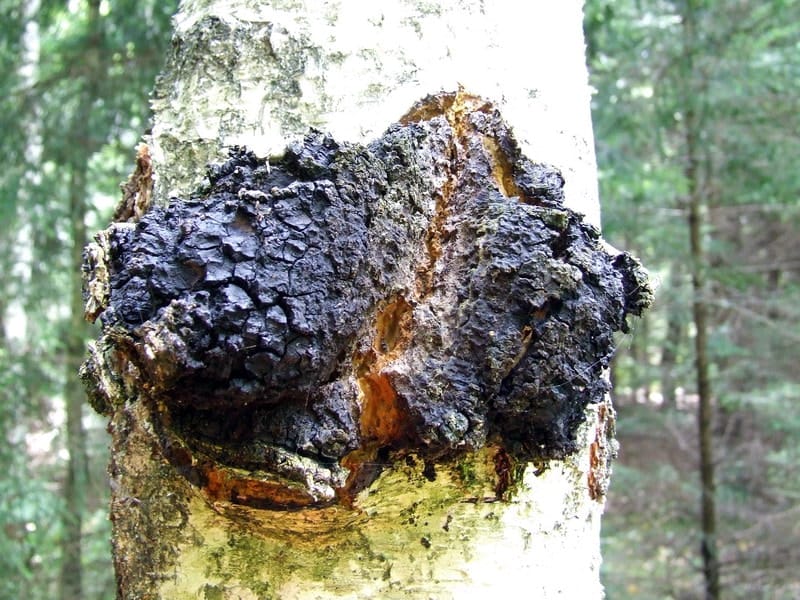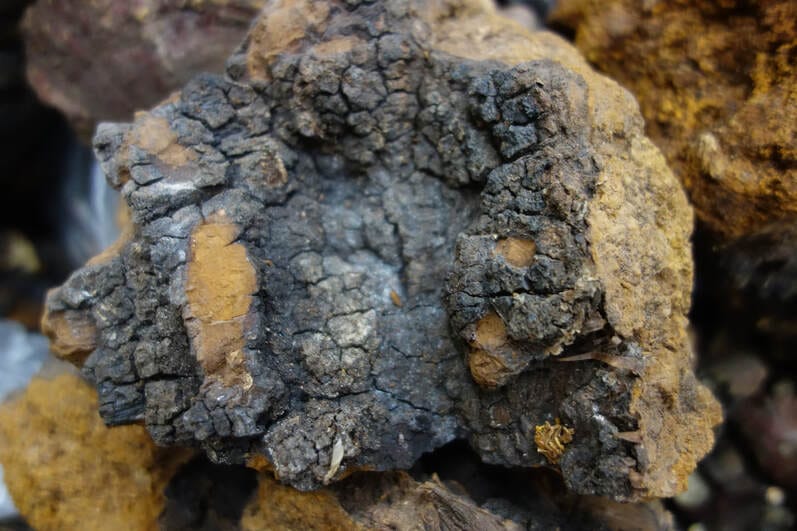Inonotus obliquus, Chaga
Hua Jie Kong Jun 桦褐孔菌 (TCM)Kabanoatanake (Japan)
 Inonotus obliquus
Inonotus obliquus(Photo by Tocekas) (Wikimedia)
 Inonotus obliquus at the Chengdu Medicine Market
Inonotus obliquus at the Chengdu Medicine Market(Adam, 2018)
Botanical name:
Inonotus obliquus
Parts used:
Fungii, traditionally only from the Birch tree
Typically found on Birch, Elm and Alder trees
Temperature & Taste:
Neutral. slightly Sweet and Bitter
Constituents:
Polysaccharides
Phenols (high levels)
Betulinic acid (especially when derived from Birch tree, but also found in the mycelium when grown on rice.)
Uses:
1. Clears Damp, Resolves Masses
-Anti-tumor
-effective against Cancers of the Liver, Gastric, Colon, Lung, Breast, Prostate, Esophagus
2. Strengthens Spleen, Benefits Qi:
-Indigestion, Nausea, Vomiting,
-chronic gastroduodenal dysfunction
-beneficial effect on metabolism (Russian research)
-increases immunity
-Diabetes
-Anti-aging
3. Clears Stomach Heat:
-Diarrhea, Colitis, chronic Gastritis
-Gastric and Duodenal Ulcers
-Polyps of the Stomach and Bowels
4. Clears Liver Heat:
-Hepatitis
-Hypertension
-Psoriasis, Eczema and other skin diseases
-effective against allergies
-Anti-viral inc. AIDS
-Nephritis
5. Nourishes Heart, Calms the Mind:
-Neurasthenia, Insomnia
-beneficial effect on Nerves and Brain
Dose:
Decoction: 3–9 grams
Fluid Extract (1:1 in 45% alcohol): 2–8 mls
Powder: 2–6 grams
Comment:
In Russia an extract is prepared and sold under the name Befungin. It is used for its anti-cancer and immunostimulating effects, for chronic inflammations of the digestive system, for skin diseases etc.
Main Combinations:
Typically used alone although more recently it is often combined with other medicinal fungii.
Major Formulas:
Cautions:
None noted
